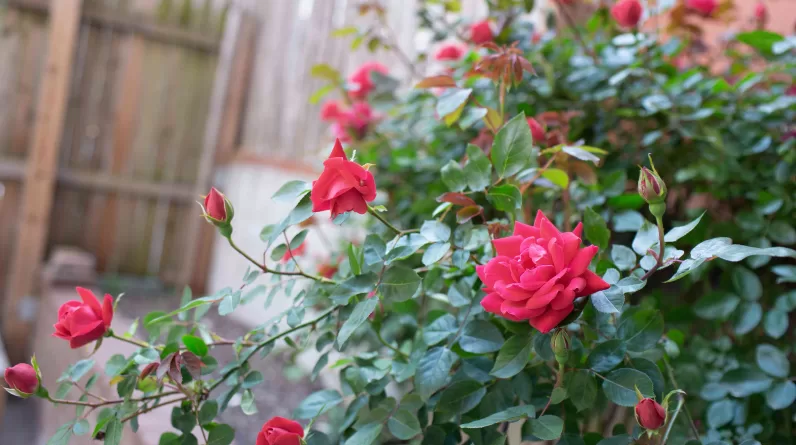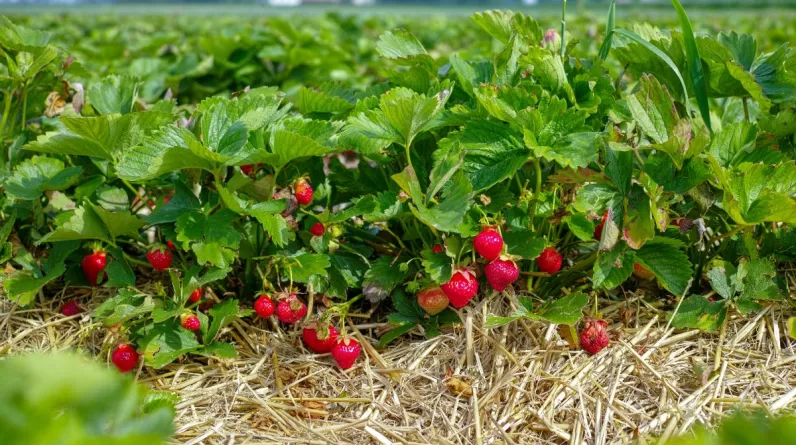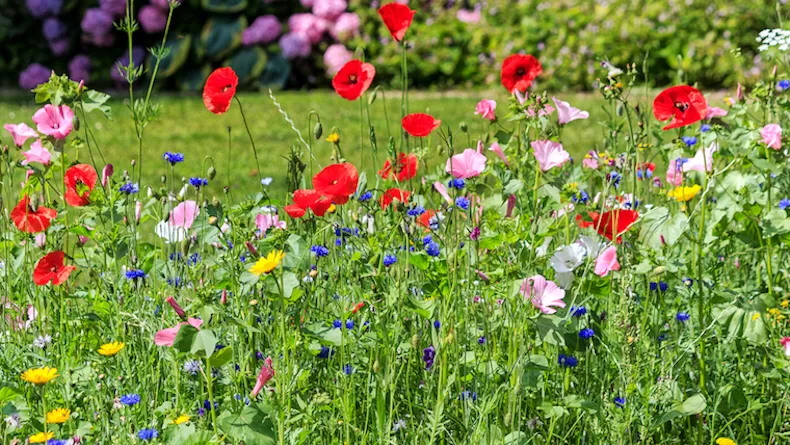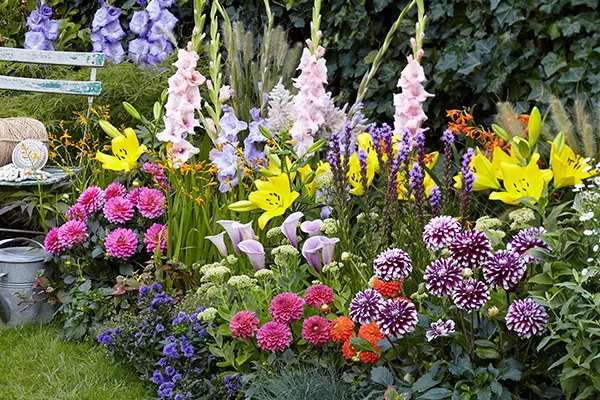Have you recently planted grass seeds in your lawn, but they’re not germinating? It can be frustrating when you don’t see the results you’re hoping for.
Unfortunately, this is pretty common because grass can be finicky. Its main goal is to grow, but for this to happen, it needs its growing environment to be just right, from the condition of the soil to the temperature and moisture levels.
However, many homeowners aren’t aware of the factors that lead to a lush, green carpet and a beautiful extension of the landscape.
In this post, we outline common grass problems. Once you can identify the symptoms, you can fix the issue and finally start enjoying your beautiful stretch of green lawn.
Let’s get started.
Why Has My New Grass Stopped Growing?
There are typically three reasons preventing your grass seeds from germinating: water, air, and light. Read on to find out how these factors affect your lawn and some pro tips on how to fix it.
Water
During the hot summer months, lawns are exposed to the scorching sun for hours on end, leaving the lawn in your garden dry, patchy, and yellow. It also leads to moss and weeds sprouting across the lawn.
These factors can cause serious damage to your lawn. It also prevents healthy grass seeds from germinating because they’re not getting the moisture they need to activate the enzymes needed for the shoot to push through the seed coating.
If your lawn tends to be dry, we recommend watering it twice a day. It’ll help combat high heat levels and prevent unwanted weeds from creeping up. A moist lawn also encourages the seeds to open up and germinate.

Alternatively, if your lawn is moist, one watering a day should be enough.
Pro tip: To gauge whether the soil is moist or dry, try pushing a stake or screwdriver into the soil. If it slides in easily, then the soil is moist, if you’re having trouble driving the stake in, this means the soil needs more water.
Air
Believe it or not, grass seeds contain a certain amount of stored oxygen that they use to break down the nutrients within the seeds, allowing them to germinate. Not only that, but this stored oxygen also provides the seeds with the energy they need to shoot up and grow.
If your lawn is receiving a lot of foot traffic, it causes the soil to become dry, dense, and compact.
When this happens, it can suffocate the seeds. As a result, they can’t use their stored oxygen supply that they need to germinate.
Pro tip: Before sowing, break up the soil. You should also level it using a fine-tooth gardening rake or hand tiller to ensure it’s crumbly with no lumps.
Light
Like most seeds, grass seeds can’t germinate if pushed too deep underground. Sowing them too deeply will prevent their energy supply from following through with the germination process.
Nor will they grow if they’re just lying on the surface of the soil. They’ll dry out too quickly and may even get eaten up by insects or birds.
The ideal depth for grass seeds is approximately half an inch from the surface of the soil. This depth should be enough to provide them with the space it needs to start growing. At the same time, it’s perfect for keeping them protected from the elements like wind, scorching heat, and hungry pests.
Pro tip: If you prefer, you can cover the soil with compost, peat moss, or another layer of soil until the grass starts growing. Make sure this extra layer is not more than 1/4-inch thick or the seedlings won’t be able to reach the surface above the covering.
New Grass Care and Maintenance Tips
Under the right conditions, new grass should start growing within the first 1–4 weeks of sowing, depending on the type of seed.
Here are the approximate times for some common grass species to germinate:
- Bermuda grass germinates in less than 7 days
- Ryegrass germinates after 5–10 days
- Fescue grass germinates after 14–21 days
- Kentucky bluegrass germinates after 21–28 days
If your grass isn’t growing as fast or as tall as it should, the following tips and hacks can help ensure it grows according to schedule.
Check Soil Temperature
Many homeowners make the mistake of planting their grass seeds in the spring. Yet, in most areas, the weather during spring is wet and cool, which means the soil is still too cold for germination.
For most grass types, the ideal soil temperatures are between 50℉ and 65℉. This means that the best time to plant cool-season grasses is from mid-August through mid-October, and in the early summer months for warm-season grasses.
Check Soil pH Levels
Like all plants, grass will only grow if the soil pH levels are ideal.

Start by researching the pH level of the type of grass you’re growing. Then, use a soil pH test kit to determine if this is the root of the problem by following these steps:
- First, dig a hole about 6 inches deep.
- Next, collect 3 teaspoons of soil to use as a sample.
- Transfer the soil to a container and add just enough water to make it muddy.
- Stir the mixture with a stick.
- Then, drain the water and transfer it to another container.
- Use the test strip according to the instructions.
- Compare the color of the strip against the product chart to get the results.
- If it’s high, you can lower it using sulfur, while adding lime will increase it. If you’re not in a hurry, compost can naturally improve the pH value over time.
Use Fertilizer
Another possible reason new grass isn’t growing is it’s not getting enough nutrients. Using fertilizer is an effective way to help your grass get the nutrition it needs but isn’t getting from the soil.
Choose a fertilizer that contains nitrogen, phosphorus, and potassium. Nitrogen helps with healthy leaf formation, phosphorus supports the development of the root and stem systems, and potassium keeps the grass strong to fight off diseases and various environmental impacts.
For best results, choose a quick-release fertilizer with a 20-27-5 NPK ratio and apply an even layer over the soil. Then, schedule the next application after about 6–8 weeks.
Keep in mind that nitrogen encourages weed growth. So, make sure you don’t use more than the recommended amount or the weeds will end up competing for nutrients with your grass seedlings.
Don’t Use Weed Killers
Grass seedlings are weak and vulnerable to the harsh chemicals in weed killers. So, if your lawn is younger than four months old, avoid using any type of herbicide. They won’t just eliminate the weeds, they’ll kill off the seedlings as well.
Instead, try a homemade weed killer made of natural chemical-free ingredients. One recipe calls for one gallon of white vinegar, one cup of salt, and one tablespoon of mild liquid dish soap.
Stir the mixture thoroughly then funnel it into a plastic spray bottle or pressure pump sprayer.
Otherwise, wait until your grass is old and strong enough to handle the harsh ingredients found in chemical weed killers, then carefully follow the instructions on the product label.
Stay Off the Lawn
As we mentioned above, too much heavy traffic on the lawn can lead to compacted soil. Remember, new grass is highly susceptible. Even the slightest pressure can easily weaken it and prevent it from growing.
So, it’s vital to avoid activities that involve stepping on the lawn or putting pressure on the soil at least until it’s been growing for a month and has become fully established.
After that, try to keep stepping on the lawn to a minimum. That’s why we recommend placing a footpath or garden walkway from the driveway to all access points to the house.
Contact a local landscaper for design ideas. Or, if you have some DIY experience, you can build your dream garden path yourself.
Mow at the Right Time

Grass roots are shorter than most other plants. The longest roots in the grass family belong to buffalo grass, which only reaches a maximum of six feet deep.
So, mowing the lawn before the grass has had time to fully develop can rip the seedlings right out of the soil, particularly if the soil is moist.
Another thing to keep in mind is that lawnmowers are relatively heavy and young grass isn’t strong enough to handle the extra weight.
The best time to mow your lawn is when the grass is about a third higher than its desired height before mowing. So, if the normal cutting height of your grass type is three inches, wait until it reaches four or more inches before getting out the lawnmower.
Final Thoughts
Grass usually seems so happy-go-lucky and undemanding, but it can be finicky to manage. This is because there are so many factors that affect seed germination as well as its ability to continue growing.
So, if you’re frustrated because your new grass has stopped growing, there’s no need to despair. There are plenty of maintenance tips to help you provide your new grass with the right conditions to grow into a healthy, vibrant lawn.







